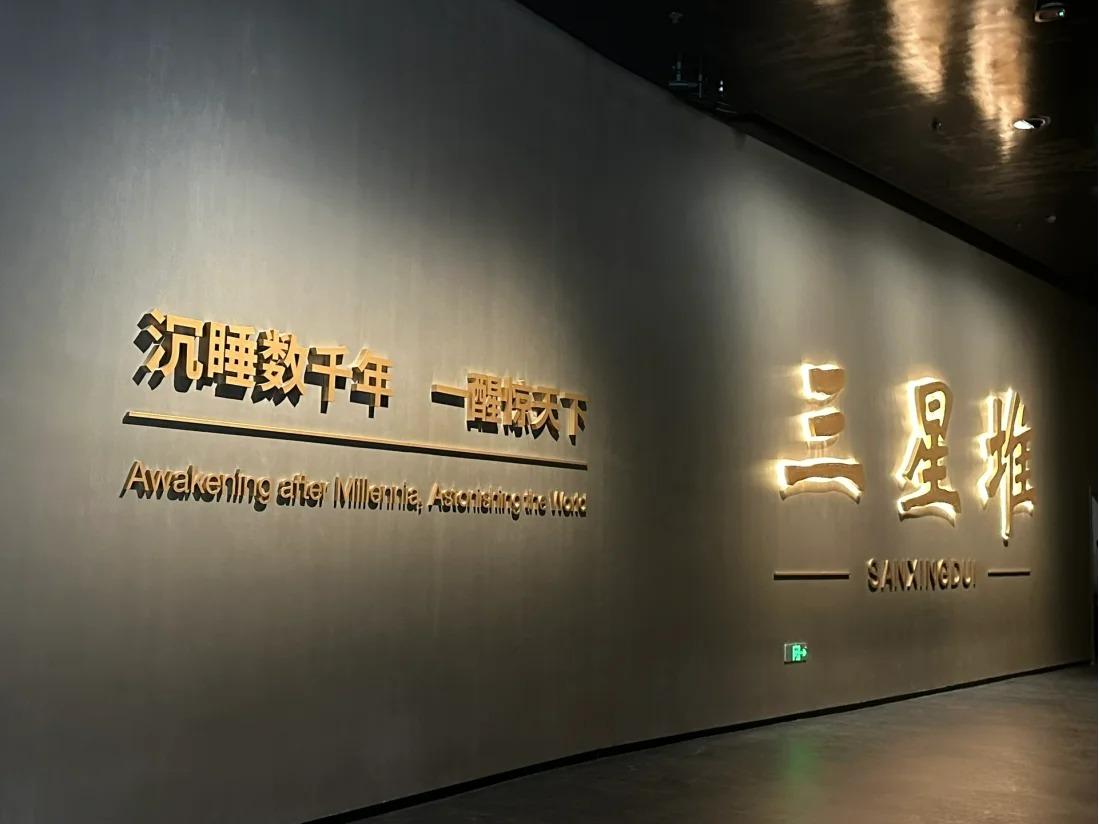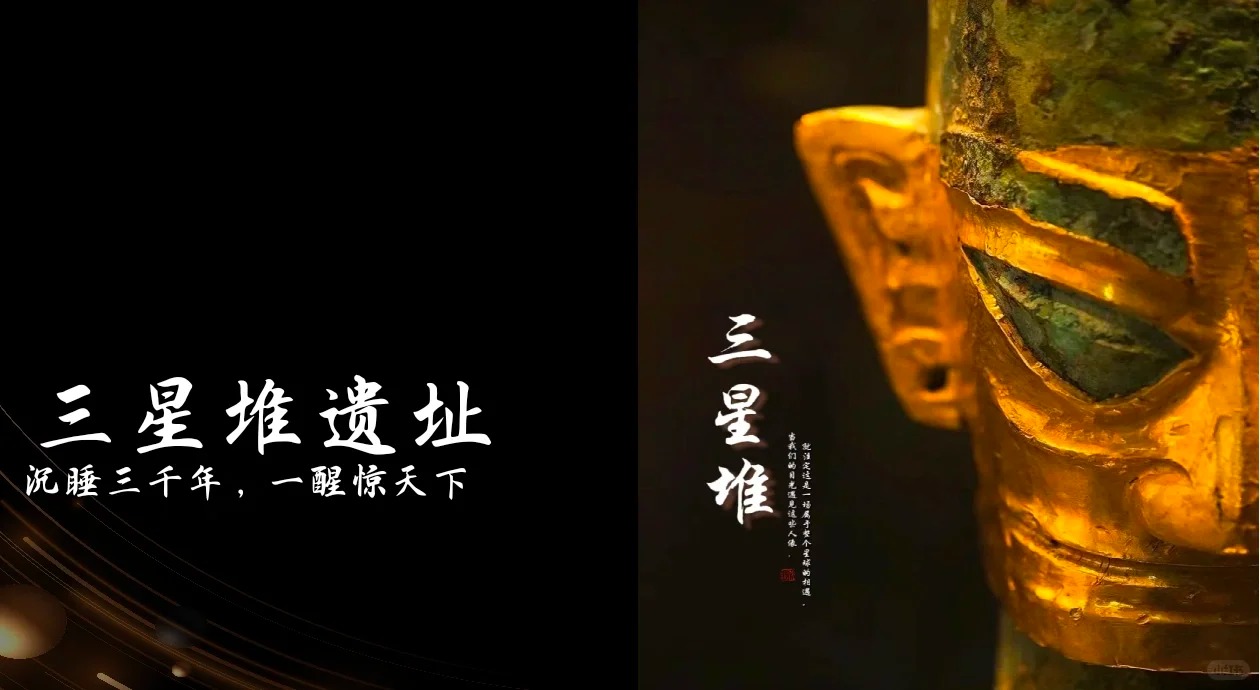Visiting Information
| Information | Details |
|---|---|
| Chinese Name | 三星堆博物馆 (Sānxīngduī Bówùguǎn) |
| Location and Address | No. 2 Sanxingdui Road, Guanghan City, Deyang, Sichuan Province, China |
| Opening Hours | 8:30 AM – 6:00 PM (Last entry at 5:00 PM) |
| Entrance Fee | 80 CNY (March to November), 60 CNY (December to February) |
| How to Get There | By Bus: Take bus K2 or 6 from Guanghan City to Sanxingdui Museum By Taxi: About 20 minutes from Guanghan City center Note: There is no metro service to the museum |
| Best Time for Visit | March to May or September to November |
| Contact Info | Tel: +86 838 5651114 Email: [email protected] |
Overview
Sanxingdui Museum is a major archaeological museum located in Guanghan, Sichuan Province, China. It houses thousands of artifacts from the ancient Shu civilization, dating back to the Bronze Age. The museum is known for its unique bronze masks, jade objects, and gold items that have revolutionized our understanding of ancient Chinese civilization.
Historical Background
The Sanxingdui site was first discovered in 1929, but major excavations didn’t begin until 1986. These excavations revealed a previously unknown Bronze Age culture that existed between 3000 and 5000 years ago. The artifacts found at Sanxingdui challenged the traditional narrative of Chinese civilization originating solely from the Yellow River basin. The museum, established in 1997, showcases these remarkable findings and continues to be a center for ongoing archaeological research and discoveries.
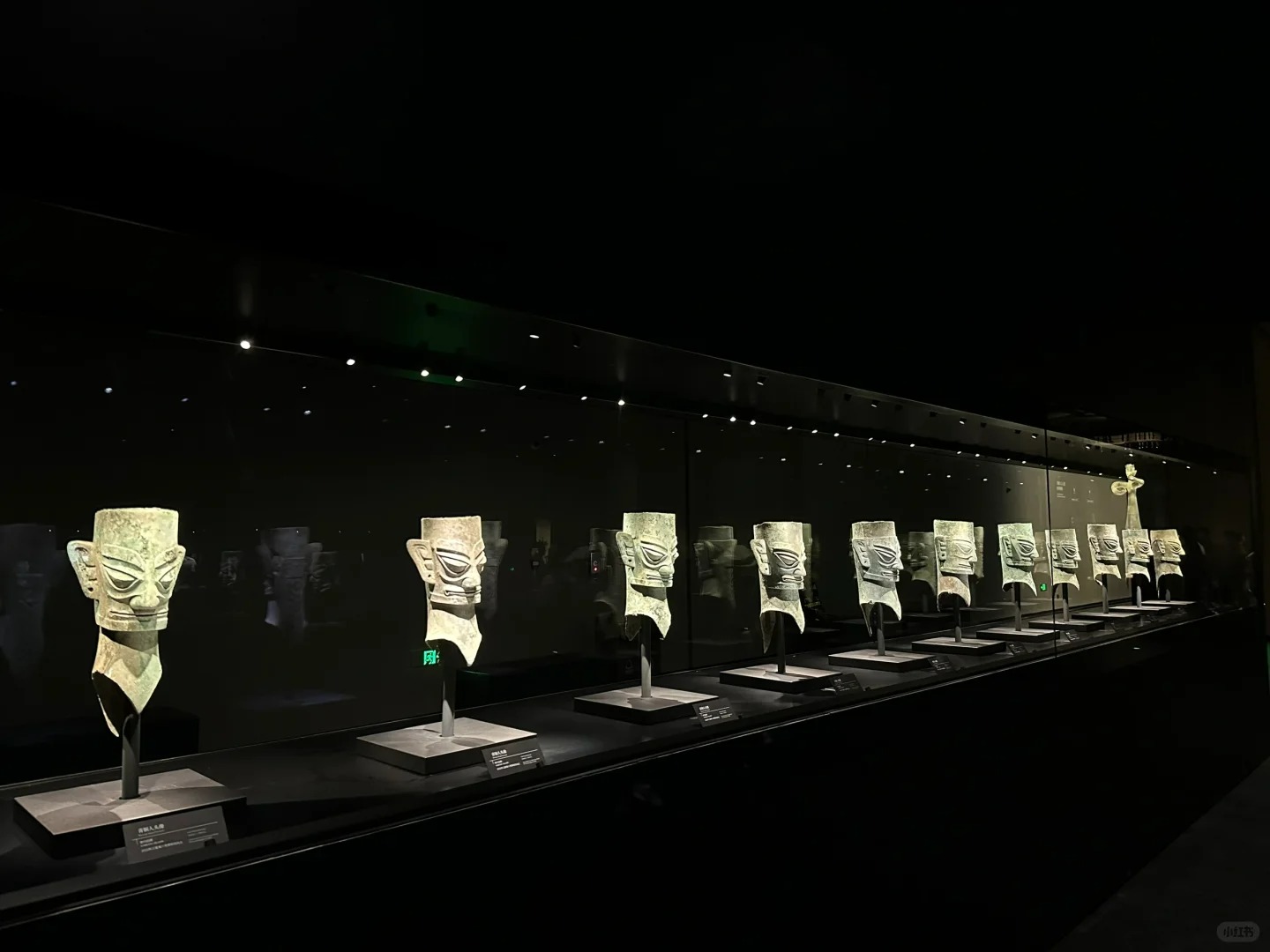
Architectural Features
- Pyramid-shaped Main Building: The museum’s main structure is designed to resemble an ancient pyramid, symbolizing the mysterious nature of the Sanxingdui culture. This unique architectural style sets it apart from traditional museum designs and adds to the overall visitor experience.
- Exhibition Halls: The museum consists of several exhibition halls, each dedicated to different aspects of the Sanxingdui culture. These halls are designed to provide a chronological and thematic journey through the ancient civilization, with state-of-the-art display cases and lighting to highlight the artifacts.
- Replica Pit Exhibitions: The museum features replicas of the original excavation pits, allowing visitors to experience the archaeological site as it was discovered. These pit exhibitions provide valuable context for understanding how the artifacts were originally found and preserved.
- Outdoor Archaeological Park: Surrounding the main museum building is an expansive archaeological park that includes reconstructions of ancient Shu buildings and structures. This outdoor area offers visitors a glimpse into the living environment of the ancient Sanxingdui people.
Cultural Importance
Sanxingdui Museum holds immense cultural importance as it showcases a previously unknown chapter in Chinese history. The artifacts found at Sanxingdui have challenged and expanded our understanding of early Chinese civilization, proving the existence of a highly developed Bronze Age culture in the Sichuan basin. The unique art style and advanced bronze-working techniques displayed in the museum’s collection have reshaped theories about the diversity and sophistication of ancient Chinese cultures. Furthermore, the museum plays a crucial role in preserving and promoting the cultural heritage of the Shu civilization, contributing significantly to China’s cultural identity and historical narrative.
Surrounding Attractions
- Jinsha Site Museum: Located in Chengdu, about 50 kilometers from Sanxingdui, the Jinsha Site Museum is another important archaeological site related to the ancient Shu culture. It features artifacts from a slightly later period than Sanxingdui and provides a complementary perspective on the region’s ancient history.
- Guanghan Ancient Town: Just a short distance from the Sanxingdui Museum, Guanghan Ancient Town offers visitors a glimpse into traditional Chinese architecture and town planning. Its well-preserved streets and buildings provide a stark contrast to the ancient artifacts in the museum.
- Sichuan Cuisine Museum: Located in Chengdu, this museum offers an interesting counterpoint to the historical artifacts of Sanxingdui. It showcases the rich culinary traditions of Sichuan province, allowing visitors to explore another aspect of the region’s cultural heritage.
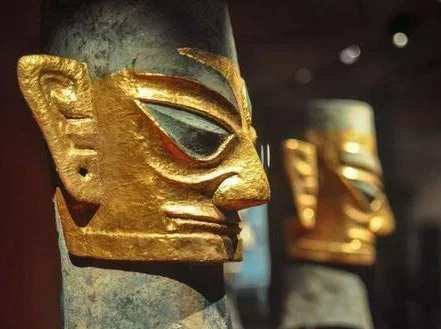
Photography Opportunities
- Bronze Masks and Statues: The iconic bronze masks and statues, with their enigmatic expressions and intricate details, offer unique subjects for photography. The museum’s lighting and display arrangements enhance these photographic opportunities.
- Jade and Gold Artifacts: The delicate jade carvings and brilliant gold objects provide excellent close-up photography subjects, showcasing the craftsmanship of the ancient Shu civilization.
- Museum Architecture: The pyramid-shaped main building and the outdoor archaeological park offer interesting architectural and landscape photography opportunities, allowing visitors to capture the unique blend of modern museum design and ancient cultural elements.
- Replica Excavation Pits: The reconstructed excavation pits provide a chance to photograph artifacts in a setting that mimics their original discovery, offering a more dynamic and contextual photographic subject.
Modern Importance
- Archaeological Research Center: Sanxingdui Museum serves as a vital center for ongoing archaeological research, continually contributing to our understanding of ancient Chinese civilizations. It attracts scholars from around the world and plays a crucial role in advancing the field of Chinese archaeology.
- Cultural Tourism Hub: The museum has become a major cultural tourism destination, significantly boosting the local economy and putting Guanghan city on the international tourism map. It plays a key role in promoting cultural exchange and understanding between China and the rest of the world.
- Educational Resource: Sanxingdui Museum serves as an invaluable educational resource, offering students and the general public a tangible connection to China’s ancient past. Its interactive exhibits and educational programs help to make archaeology and ancient history accessible to a wide audience.
- Symbol of Cultural Identity: The unique artifacts found at Sanxingdui have become symbols of Sichuan’s distinct cultural heritage. The museum plays a crucial role in preserving and promoting this heritage, contributing to regional pride and cultural identity.
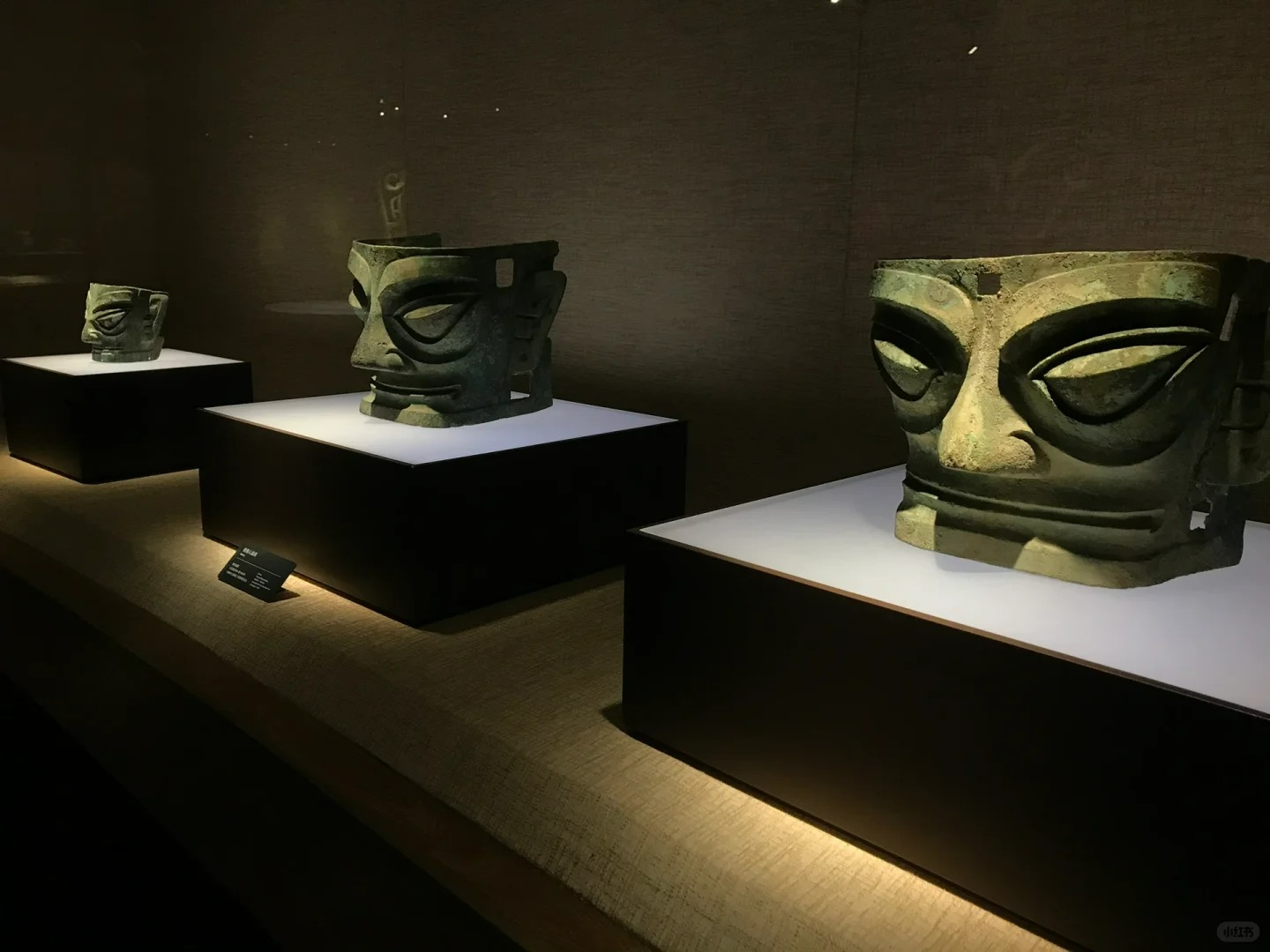
FAQ
- What is Sanxingdui Museum famous for?
Sanxingdui Museum is famous for its collection of mysterious bronze masks, intricate gold items, and jade artifacts from the ancient Shu civilization, dating back 3,000 to 5,000 years. - What’s inside Sanxingdui Museum?
Inside Sanxingdui Museum, you’ll find a vast collection of Bronze Age artifacts including large bronze masks, gold scepters, jade carvings, pottery, and other relics from the ancient Shu civilization. - Is Sanxingdui Museum free?
No, Sanxingdui Museum is not free. The entrance fee is 80 CNY from March to November and 60 CNY from December to February. - Is Sanxingdui Museum worth visiting?
Yes, Sanxingdui Museum is definitely worth visiting. It offers a unique glimpse into an ancient Chinese civilization and houses artifacts that have revolutionized our understanding of China’s early history. - What to do in Sanxingdui Museum?
In Sanxingdui Museum, you can explore the various exhibition halls, view the iconic bronze masks and other artifacts, visit the replica excavation pits, and explore the outdoor archaeological park. - How do I get to Sanxingdui Museum in the local city?
In Guanghan City, you can take bus K2 or 6 from the city center to Sanxingdui Museum. Alternatively, a taxi ride from Guanghan City center takes about 20 minutes. - How to visit Sanxingdui Museum?
To visit Sanxingdui Museum, plan to spend at least 2-3 hours exploring the exhibits. Consider hiring a guide or using an audio guide to fully understand the significance of the artifacts. Visit in the morning to avoid crowds, and remember to bring your ID for ticket purchase. Photography is allowed in most areas, but flash is prohibited.


